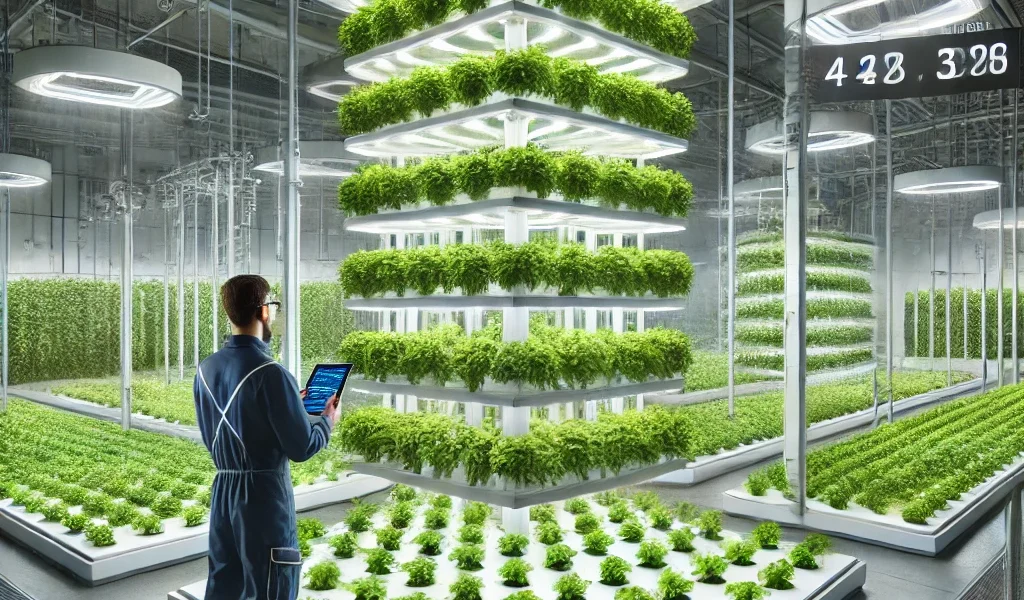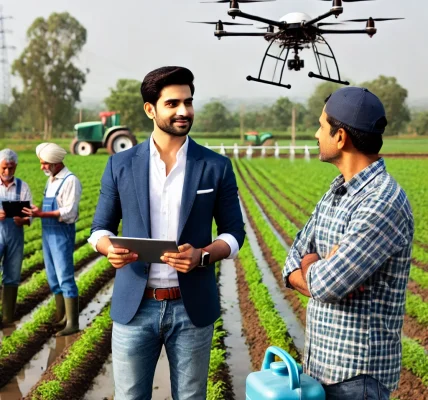Introduction
With the rising demand for sustainable and efficient agricultural practices, vertical farming and hydroponics have emerged as game-changers in modern agriculture. These innovative techniques not only maximize crop yield but also conserve water and reduce dependency on soil. However, setting up a hydroponic or vertical farming system requires significant investment.
To promote these advanced farming methods, the Government of India has introduced various schemes and financial support programs. In this guide, we’ll explore different government funding options, eligibility criteria, and steps to apply, ensuring you make the most of available support.
What is Vertical Farming and Hydroponics?
Vertical Farming
Vertical farming involves growing crops in stacked layers, often using controlled environments like greenhouses or indoor spaces. This method increases production per square foot and reduces dependency on traditional farmlands.
Hydroponics
Hydroponics is a soilless farming technique where plants grow in a nutrient-rich water solution. It ensures faster growth, better quality produce, and reduced water usage compared to traditional farming.
Government Schemes Supporting Vertical Farming and Hydroponics
1. National Horticulture Mission (NHM) & MIDH
The Mission for Integrated Development of Horticulture (MIDH), under the National Horticulture Mission (NHM), provides subsidies for protected cultivation, including hydroponics and vertical farming.
- Financial Assistance: Up to 50% subsidy for hydroponic greenhouse setups.
- Who Can Apply? Farmers, entrepreneurs, startups, and FPOs (Farmer Producer Organizations).
- How to Apply? Applications can be submitted through State Horticulture Departments or the MIDH website.
2. Agri-Clinics and Agri-Business Centres (ACABC) Scheme
This initiative by NABARD (National Bank for Agriculture and Rural Development) and the Ministry of Agriculture offers loans and training support to agripreneurs.
- Financial Assistance: Startup loans up to ₹20 lakh for individuals and ₹1 crore for FPOs.
- Eligibility: Farmers, agri-graduates, and entrepreneurs.
- Application Process: Apply through NABARD’s official portal or regional rural banks.
3. Sub-Mission on Agricultural Mechanization (SMAM)
SMAM promotes modern farming by offering subsidized equipment and technology adoption incentives.
- Benefits: 40–50% subsidy on hydroponic and vertical farming equipment.
- Target Audience: Individual farmers, cooperatives, and agribusinesses.
- How to Apply? Contact local agriculture departments or apply via the Direct Benefit Transfer (DBT) in Agriculture website.
4. PM Formalization of Micro Food Processing Enterprises (PM-FME) Scheme
A scheme designed to support agribusiness startups in processing and value addition.
- Financial Support: 35% subsidy (up to ₹10 lakh) for setting up processing units.
- Ideal for: Hydroponic farm owners looking to process or package their produce.
- Application Mode: Online via MSME or Agriculture Ministry portals.
5. Startup India & AgriTech Support
The Startup India initiative provides financial incentives and funding for AgriTech and sustainable farming startups, including hydroponics ventures.
- Incentives: Tax benefits, easy loan approvals, and seed funding.
- Who Can Apply? Agritech startups registered under Startup India.
- Application Process: Register on the Startup India portal and pitch your business plan.
6. Dairy Entrepreneurship Development Scheme (DEDS) (For Integrated Farms)
If you’re integrating hydroponic fodder production into dairy farming, DEDS provides subsidies.
- Support Amount: 25–33% subsidy on hydroponic fodder systems.
- Eligibility: Dairy farmers, FPOs, and self-help groups.
- Application Process: Apply through NABARD-affiliated banks.
Step-by-Step Guide to Applying for Government Funding
- Identify Suitable Schemes – Choose the funding program that aligns with your vertical farming or hydroponics venture.
- Prepare a Business Plan – Include cost estimates, expected yield, market strategy, and sustainability benefits.
- Register Your Business/Farm – Many schemes require applicants to be registered as MSMEs, startups, or FPOs.
- Submit Application Online – Use respective portals like NHM, NABARD, Startup India, or State Agriculture Departments.
- Await Inspection & Approval – Some schemes may require site verification before sanctioning funds.
- Receive Funds & Implement Project – Once approved, funding is disbursed directly to your bank account.
Key Benefits of Government Support for Vertical Farming & Hydroponics
- Reduced Initial Investment – Government subsidies help lower setup costs.
- Encouragement for Sustainable Farming – Hydroponics and vertical farming reduce environmental impact.
- Support for AgriTech Innovation – Incentives for adopting modern, data-driven agriculture.
- Increased Profitability – Enhanced yield and quality lead to higher market value.
Conclusion
Government schemes provide a golden opportunity for farmers, startups, and entrepreneurs to embrace innovative farming technologies like vertical farming and hydroponics. By leveraging these funding options, you can reduce costs, enhance productivity, and contribute to a more sustainable agricultural ecosystem.
If you’re planning to start your own hydroponic farm, make sure to research, apply for subsidies, and take advantage of available government support.
For the latest updates, always check official government portals and consult local agricultural officers before making any financial commitments.
FAQs
1. How much government subsidy can I get for hydroponics in India?
Subsidies vary by scheme, ranging from 40% to 50% of total project costs.
2. Is vertical farming profitable in India?
Yes! It offers higher yields, less water usage, and year-round production, making it a lucrative venture.
3. Can I get a loan for hydroponics in India?
Yes! NABARD and commercial banks offer loans with interest subsidies.
4. How do I apply for Startup India funding for hydroponics?
Register your agribusiness under the Startup India initiative and apply for government grants.
5. Are there state-specific schemes for vertical farming?
Yes! Many states like Maharashtra, Karnataka, and Telangana offer additional incentives.




